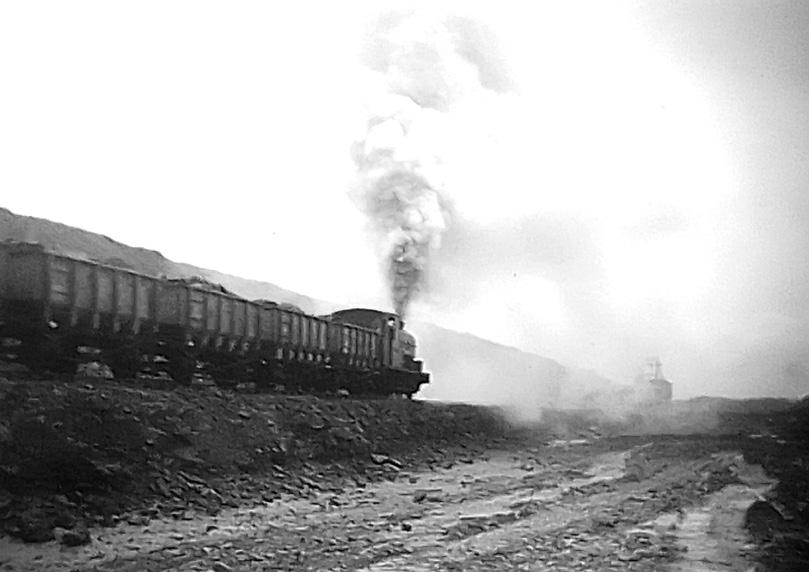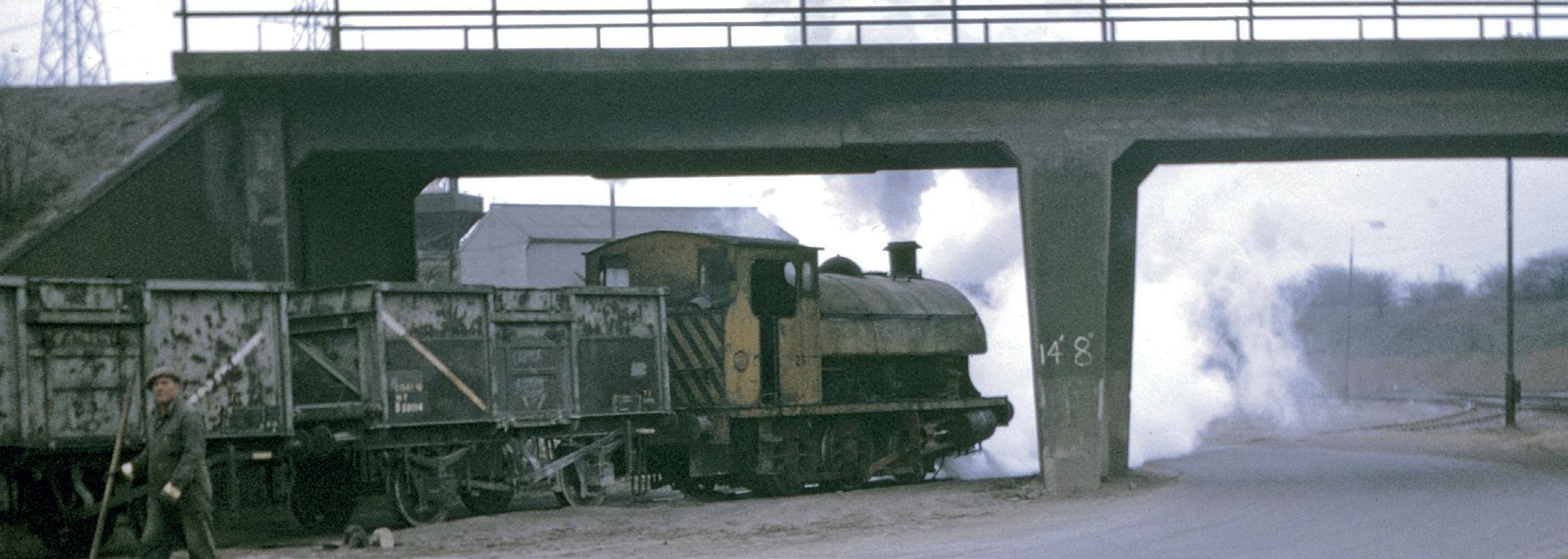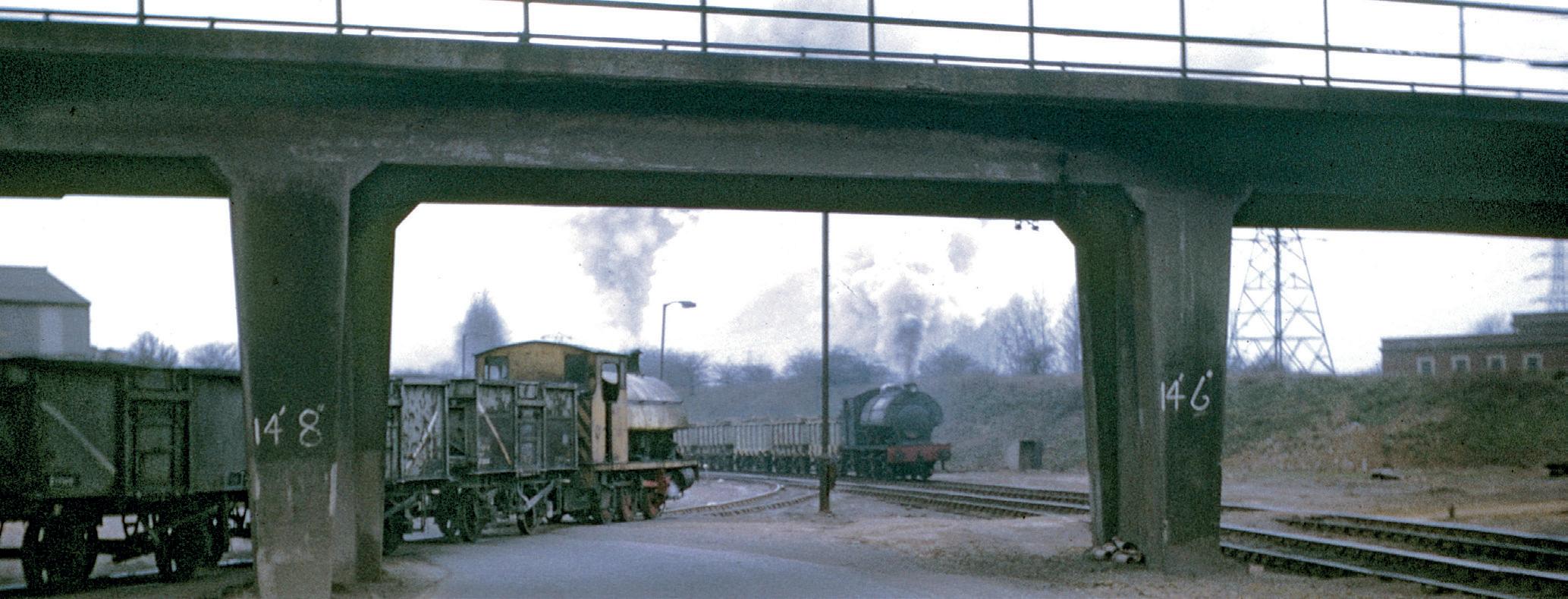

ENGINES at CORBY
Memories of an Industrious Railway System

Compiled by Peter Staughton
ENGINES at CORBY
Memories of an Industrious Railway System
 Compiled by Peter Staughton
Compiled by Peter Staughton


4. CORBY WORKS
Most of my early railway enthusiast journeys involved pedal cycles and were perforce restricted to locations quite close to home, so my first ever visit to Corby on the 18th May 1964, using my newly acquired motorcycle, seemed both a blissfully effortless but nevertheless adventurous experience, one that was destined never to be forgotten and indeed it was the first of many.
Later, whilst attending a new employees induction session at the Stewarts and Lloyds Corby steelworks in 1965 we were proudly informed that we were now working at “one of the largest integrated steelworks in Europe”. As our guide explained, “iron ore comes in, tubes go out.” Everything else that happened in between these two events occurred within the confines of the works, the perimeter of which, depending on
how exactly it was measured, was about 5 miles. To source the iron ore, a network of railway lines extended out into the surrounding countryside, some of these being several miles long, and in the works itself almost every part of the production process required some sort of rail transport.
Many years later I recall reading that the system at Corby was one of the largest privately owned ones in the country. This was quite believable and to manage all the various types of traffic approximately 40 engines were available, divided into two separate allocations. Working out from a large modern shed at Pen Green, on the northern side of Corby, were the ironstone quarry engines which were owned by a subsidiary, ‘S & L Minerals Ltd’ and were in a dark green livery. These were almost exclusively steam, but augmented by a small number of diesels including some on trial


No.24 was very much the odd engine out amongst the collection of Hawthorns and Barclays that were its contemporaries. Nevertheless its size and extra power rendered it most suitable for tube works duties and, indeed, during my time at Corby it was so employed for many months at a time. These two pictures were taken near the south exchange sidings in November 1967 and Corby North signal box can be seen in the distance. I have particular cause to remember these pictures as the driver offered me a footplate ride back to the tube works. To my everlasting regret I had to decline because not only had I left a borrowed motorcycle parked by the main road but this was a lunch time visit and my interest in looking out of the office window at passing locomotives had been noticed by those on high, best not to chance it!




ENGINES at CORBY

Left. With a sharp exhaust and lifting safety valves, No.20 makes an energetic restart with what appears to be a loaded tube train after having stopped for water. Anyone who has ever experienced a footplate ride on the average industrial loco will know that it is not usually a Rolls-Royce experience, but a careful look at some of the undulations in the track in this picture will perhaps offer an explanation of why this is so. March 1969.
Below. Work stained No. 13 was on Tarmac Plant shunting duties in March 1969. Track maintenance work is in progress in the background.






Inthe 1930’s the small village of Corby in Northamptonshire was transformed into a sizable town as the firm of Stewarts and Lloyds Ltd enlarged their existing ironworks into an integrated plant delivering tubes as an end product. Ultimately a complex railway system was created, both to deliver iron ore from the adjacent quarries and to facilitate production in the iron, steel and tube works. Until the late 1960’s an extensive fleet of industrial steam locomotives was the lifeblood of the system, This book describes the authors observations on their very varied comings and goings, the surroundings they worked in and some of the duties that they undertook. ISBN

£14.95Price:- £15.50



